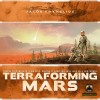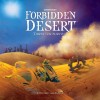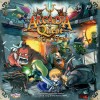God Keizer
gamer level 2
454 xp
454 xp
followers
0
0
Use my invite URL to register (this will give me kudos)
https://boardgaming.com/register/?invited_by=kosterix
profile badges
recent achievements

Follower
Follow another gamer by clicking "Follow" after reading a review or viewing their profile.
Follow another gamer by clicking "Follow" after reading a review or viewing their profile.

Reviewed My First Game
Submit a game review
Submit a game review

Rated 5 Games
Rate 5 games you have played.
Rate 5 games you have played.

Check Out My Favorites
Add 5 games to your Favorites list.
Add 5 games to your Favorites list.
Player Stats
Critic (lvl 1)
275 xp
275 xp
Explorer (lvl 0)
40 xp
40 xp
Professor (lvl 0)
41 xp
41 xp
Reporter (lvl 0)
25 xp
25 xp
About Me
eurogames
videogames
jigsaw sudoku
backed 2 games @KS
cautious.
God Keizer's Followers (0)
No Followers Yet







































Evolution: Climate
Lovely is not the correct word, it’s cutt-throat. You need as a non carnivore to sacrifice cards to become too big to be eaten. The game has countless combinations.
You can influence the climate, preferring your species and hurting others.
The only negative is the take-that (picking on the weaker ones, me in this case, 3 times in a row, is not fun at all; i even considered walking away. The solution was of course to become instantly bigger, but I learned this lesson too slow. Still the dynamics are off the scale.
Highly recommended, this and only this version. The species tracks have holes that keep the blocks in place. The food bonus/malus is very elegant. We didn’t trigger the climate events, but they are there.
Requires shuffling a lot and at least 1 round of playing to have the game click.